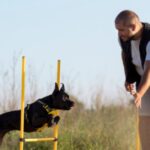Fourth Wing” has become a hot topic among book lovers, sparking intriguing discussions about its characters, themes, and plot twists. Whether you’re hosting a book club or looking for a deeper understanding of the novel, thoughtful questions can open up a wealth of perspectives. The following list of “Fourth Wing” book club questions will help facilitate lively discussions, enhancing your group’s engagement with the book.
In this article, we’ll explore how certain questions can reveal deeper meanings in the text, highlight character development, and even provide insight into the author’s intentions. Whether you’re revisiting the book or discussing it for the first time, these questions will help stimulate conversation and encourage critical thinking.
Understanding the Characters of Fourth Wing
One of the most compelling aspects of Fourth Wing is its richly drawn characters, each carrying complex motivations, desires, and conflicts. A key part of your book club discussion will likely revolve around these characters. The protagonist’s journey, the relationships between the characters, and how these individuals evolve throughout the story are critical areas to explore.
Character Dynamics and Relationships
Ask your book club members:
What are the core relationships in the book?
Understanding how the characters interact with each other can unlock emotional layers of the plot. Discuss the dynamics between the protagonist and supporting characters. Does the author emphasize any key relationships, and how do they shape the overall narrative?
How do the characters grow or change throughout the story?
Growth is a central theme in most novels, and Fourth Wing is no exception. Does the main character experience significant internal change? How do their motivations shift, and what events lead to these changes?
Villains, Antagonists, and Their Role
Another key discussion point in Fourth Wing is the role of antagonistic characters. Are these characters truly villains, or are they complex figures with valid motivations?
Is the antagonist of the story as simple as they seem, or is there more to their character than meets the eye?
Consider whether the antagonist’s motivations are rooted in personal backstory, ambition, or perhaps a misguided sense of justice. Reflecting on this character’s role in the plot can give rise to deeper discussions on morality and justice in the novel.
Key Themes in Fourth Wing
The themes explored in Fourth Wing resonate with readers long after they finish the book. The author’s ability to weave multiple themes into a single narrative makes this book an excellent choice for a book club discussion. From power dynamics to the exploration of identity, each theme is worth dissecting to gain a fuller understanding of the novel’s message.
Power and Control
One of the most dominant themes in Fourth Wing is the interplay between power and control. How do different characters use power, and what consequences do these actions have on their relationships and the plot?
How is power portrayed in the book, and which characters seek it most?
How does power affect the protagonist’s choices and motivations?
Discuss whether power is used for good or evil and what the author might be trying to communicate about the dangers of unchecked power.
Identity and Self-Discovery
As with many coming-of-age novels, Fourth Wing delves into the theme of identity. The protagonist struggles with questions of self-worth, belonging, and discovering their true purpose.
How do the characters in the novel come to understand who they are?
What challenges do they face in defining their identity?
This theme is powerful in its exploration of how personal struggles contribute to self-realization. Reflecting on these questions in your book club can offer profound insights into the journey of self-discovery.
Morality and Ethics
Another theme present in Fourth Wing is the examination of moral dilemmas and the choices characters must make.
How do the characters face moral decisions, and what consequences do their choices have?
What does the book suggest about the nature of good and evil?
The ethical questions raised in the story often lead to heated debates, so inviting members to reflect on these moments can deepen the book club discussion.
Plot Development and Symbolism in Fourth Wing
In addition to the characters and themes, Fourth Wing is filled with intricate plot developments and powerful symbols. The way these elements are woven into the narrative offers an exciting area for discussion. From key events that drive the story forward to the symbolic use of certain objects or settings, every detail can reveal more about the underlying messages of the book.
Key Plot Events and Their Significance
Many of the plot events in Fourth Wing are full of surprises, twists, and dramatic turns. Some of these events serve as turning points for the characters, while others push the themes of the book to the forefront.
What are the pivotal moments in the book that shift the direction of the plot?
How do these events impact the characters’ development and the overall outcome of the story?
These discussions often lead to deeper explorations of what constitutes good storytelling and how well a plot can engage readers.
Symbols and Imagery
The symbolism in Fourth Wing adds layers to its narrative. From settings to objects, each symbolic element invites readers to consider its deeper meaning.
What symbols stand out in the book, and how do they connect to the themes?
Do these symbols contribute to the development of the plot or the characters?
By unpacking the symbolic elements, your book club can better appreciate the author’s craft and the nuanced storytelling involved in the novel.
The Author’s Writing Style and Technique
Another valuable area for discussion is the author’s writing style. Fourth Wing is known for its engaging prose and evocative storytelling. Examining the author’s writing techniques can provide insights into the narrative structure and the emotional impact of the book.
How does the writing style affect your engagement with the story?
What techniques does the author use to keep the reader hooked?
Whether it’s the pacing, the tone, or the perspective, examining the author’s style can add an interesting dimension to your book club meeting.
Conclusion
As your book club wraps up its discussion of Fourth Wing, it’s clear that this novel offers rich material for reflection. From its complex characters and themes to its unexpected plot twists and symbolism, there is no shortage of areas to explore. By asking thought-provoking questions about power, identity, morality, and more, you’ll ensure your discussions are insightful and engaging.
ALSO READ:Wait a Minute, Who Are You? Understanding the Impact of Identity Questions in Conversations
FAQs
What are the key themes in Fourth Wing?
The key themes include power and control, identity and self-discovery, and morality and ethics. These themes offer deep insights into the characters’ personal journeys and the novel’s broader messages.
How can I organize a productive book club discussion for Fourth Wing?
Start by encouraging participants to reflect on the characters, themes, and plot developments. Use questions to guide the conversation, allowing everyone to share their thoughts and reactions. Keep the conversation focused on specific elements of the book to ensure a productive and engaging discussion.
Are there any symbols in Fourth Wing that I should focus on during a book club meeting?
Yes! Symbols play a significant role in the story, from objects to settings. Pay attention to how these symbols connect to the book’s themes and characters to uncover deeper meanings.
How does the writing style of the author impact the story?
The author’s writing style contributes significantly to the pacing and emotional impact of the story. By analyzing the style, you can gain a better appreciation of how the author engages the reader and builds tension throughout the narrative.







